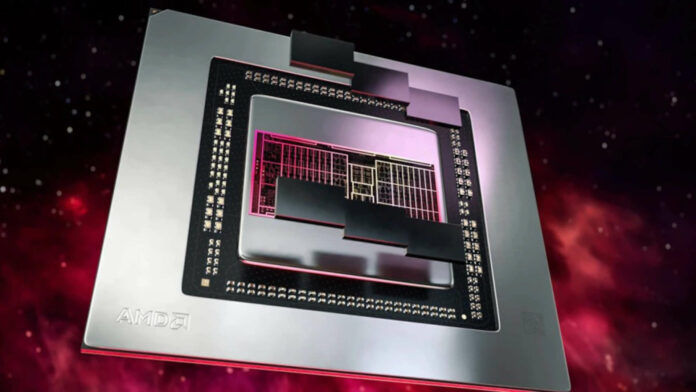The upcoming AMD RDNA 4 GPUs might offer considerable performance for their size. Leaked specs corroborate rumours that Team Red will focus on the mid-range, but don’t count them out just yet. On paper, they might even beat Nvidia RTX 4070 Ti Super while consuming much less power.
According to the leak, Navi 48 GPUs feature 32 WGP (Work Group Processors), 64 CUs (Compute Units), and a 256-bit memory bus. The memory system delivers 693GB/s of bandwidth—2,770GB/s effective. These are some high claims for a die measuring 240mm², which is even smaller than the previously rumoured 300 to 350mm² figure.
The closest chip available is AMD Radeon RX 7800 XT, with 60 RDNA 3 CUs, 624.1GB/s of bandwidth, and the same bus. However, this has a larger 346mm² footprint.
According to @All_The_Watts on X, AMD’s upcoming Navi 48 GPU delivers 50 TFlops of performance at around 215W of power. While not a definite indicator of gaming performance, this metric is on par with Nvidia’s GeForce RTX 4080 Super. That’s a lot of performance for a much lower power consumption—about a third less.
If true, this would make for a fairly efficient and performant GPU. It might even be cheaper, given its smaller die size. It’ll also be interesting to see the improvements the next generation brings to ray tracing. Sadly, the current Radeon RX 7000 series lacks in that department even though they are fairly competitive in rasterised tasks.
The budget Navi 44 GPU, on the other hand, should target performance between RX 7600 and RX 7800 XT. In the low-mid range, this GPU houses 16 WGP, 32 CUs, a 128-bit bus, and 288GB/s of bandwidth (515GB/s effective), all while taking only 130mm².
While it might be a risk to leave Nvidia ruling the high-end, value propositions are beginning to look promising. In any case, take these specs with a grain of salt until official announcements. These shouldn’t take long, as rumours suggest RDNA 4-based GPUs will launch before the end of this year.


